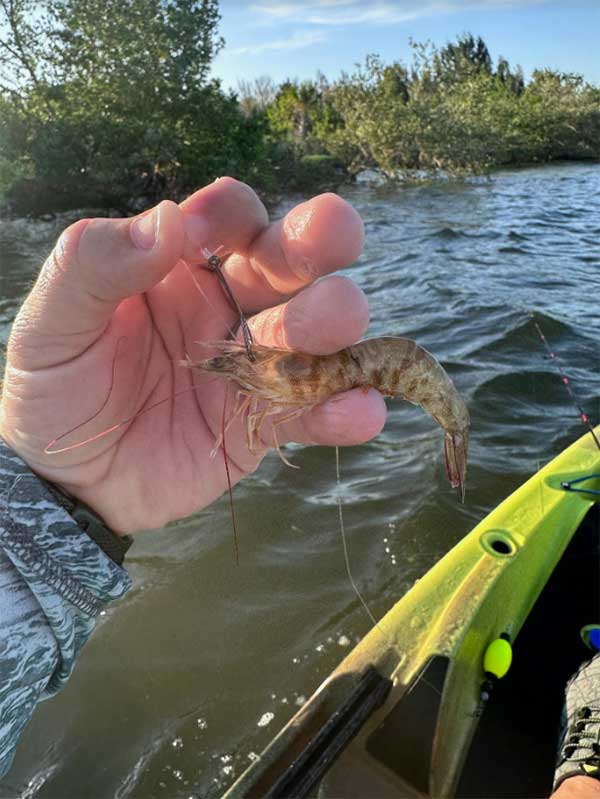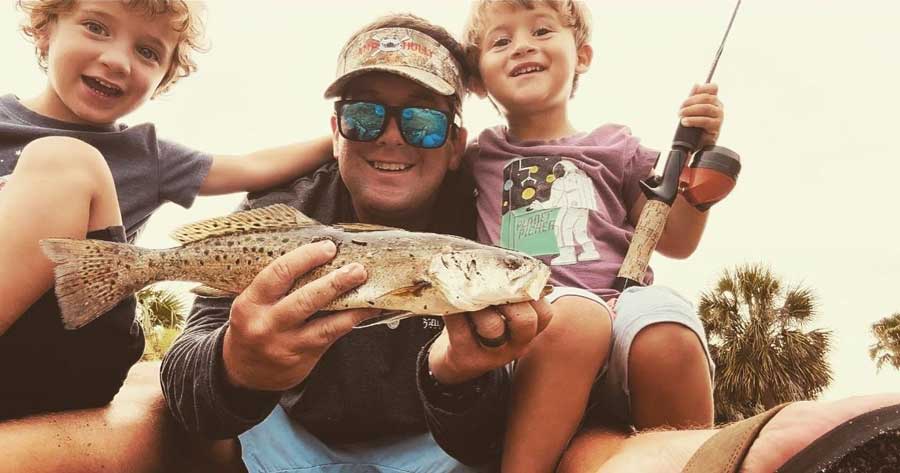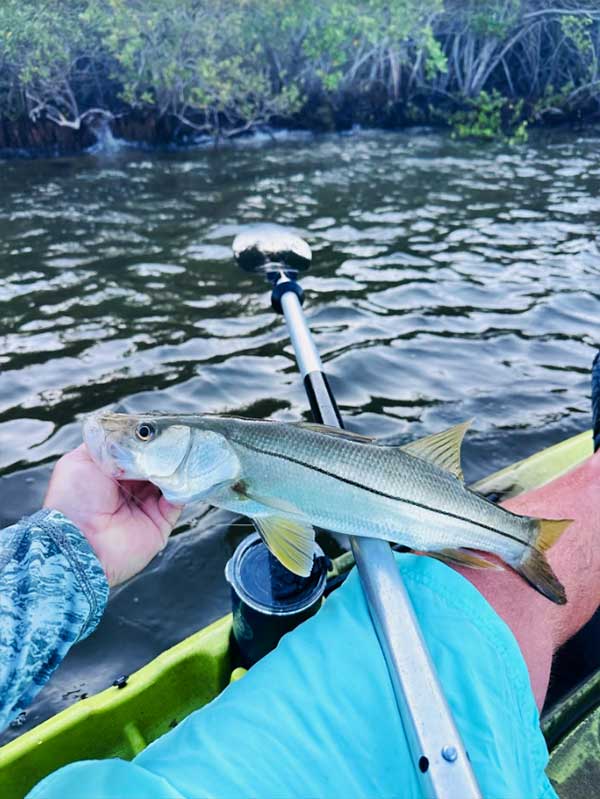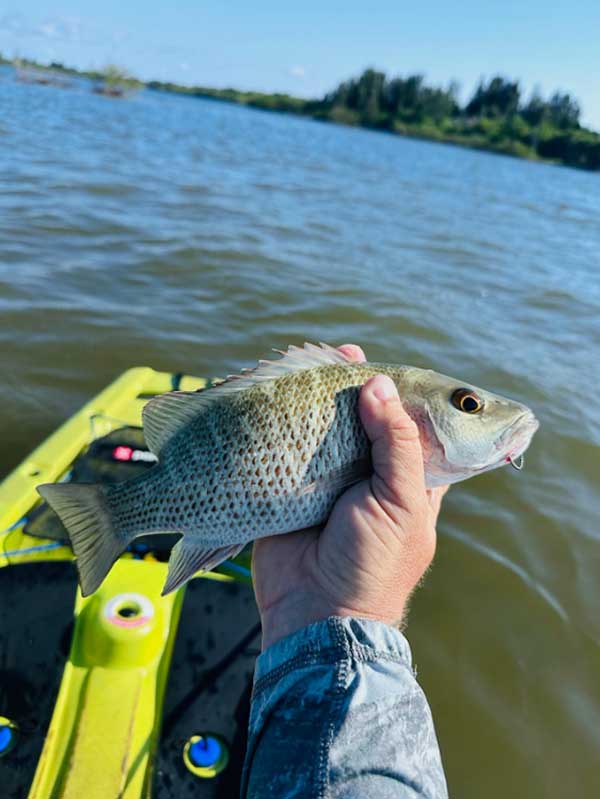
Inshore Fishing for Beginners - Live Shrimp
Happy Monday Spacefish!
I hope everyone had a fantastic week! This week I am switching gears from my usual point of focus which is spot reporting, to talk about a great tactic and style of fishing that I essentially never employ but I think may be beneficial to our readership that are looking to make their first Florida inshore fishing trip via out of town vacation, or maybe this reader just moved to the area and is new to inshore fishing and just wants to go out and “catch something”.
That is how I got going after moving here several years ago. I started fishing for live shrimp so I could focus on learning the fishery, and where fish were located. I personally feel that as one becomes more seasoned and confident artificial is the best way to cover the most water and generate the most total bites, but for someone that may feel confused when on the water this is a great way to ease in. So let’s get started!
Where to Get Live Shrimp
Support your local bait shop! One of the great things about fishing with live shrimp is you get a chance to support a local business in your community. There are many to choose from, depending on where you are located along the Space Coast, and where you choose to fish. For me over the past few years, I have gotten live bait from several of them. My first ever Speckled Trout was caught on the Banana River using shrimp from Man Overboard; my first ever Tarpon was caught using a live shrimp from Rigg’s Outpost on the Eau Gallie River, my kid’s first Speckled Trout was caught using a live shrimp from Black Dog, and recently for the purpose of this report, I got a dozen shrimp from Captain Hook’s in Titusville on a day I explored a new area for future fishing reports.
Another added benefit of the bait shop is being able to talk to locals that are dialed in to the local fishery. My first time ever fishing in Brevard County, before I even stepped foot in a kayak, I walked into Black Dog, told them I want to catch a fish in the lagoon, what should I do. They not only sold me the shrimp, but were able to tell me which hooks to use, what line and leader to use, what other terminal tackle to use, and if you are a total novice like I was the first time I walked into Black Dog, they can even tell you an area to target and what fish are likely to be there. That was how I caught my first Mangrove Snapper and Sheepshead under the Melbourne Causeway Bridge.
Live Shrimp Set Up
If you are a newbie angler, I highly recommend getting a small bait bucket with an aerator. The aerator will keep your bait alive due to the bubbles providing oxygenation. During the hot months of the year such as we are currently experiencing I highly recommend filling up a ziploc bag with ice and putting it in the bucket to keep the water cool. You do not want to put ice in the same water as the shrimp because it will melt and desalinate the water.
There are a variety of rods that will get the job done, if you are fishing from the shoreline or are fishing from a kayak, my recommendation would be a 6’6” or a 7’ foot spinning combo spooled with 10-20 pound braid and 20-30 pound fluorocarbon leader. At the end of your leader a size 1, or 1/0 circle hook is ideal, going bigger than 1/0 will weigh down your shrimp. There are 2 ways to go in terms of delivery – there is the “freelining” approach where you go braid to leader to hook and that is it, or you can go with a floating cork, for the cork approach I highly recommend a Cajun Thunder Popping Cork.
There are two benefits of popping corks in my opinion, the first is that on windy days, this cork will provide weight to the cast, and allow you to cover much more water. The second is that you can literally “pop” the cork to provide surface level disturbance than can grab the attention of predatory fish in the area through the pushing of water and the clacking sounds of the beads, the fish look up and see a bait dangling below the surface and can be enticed to take advantage.
Free lining can be advantageous on calm days and in calm water situations, especially when the fish are in shallow water, have greater visibility and are more likely to be “spooky”. I fished with live shrimp for the first time in years recently, I used a popping cork due to being in an area of exposed winds and choppy water, but back when I used this tactic more often, I had an equal amount of success with both approaches. I’d be ready for both and do what gives you the best chance of success that day.
Lastly, there is the matter of how to hook the live shrimp. For me, it depends on whether I am free lining or using the shrimp under a cork. For the free line style, I hook through the end of the tail, the hard part, the part you would pull off if eating fried shrimp. I like this style for the free line approach due to getting a head first cast, that is much more aerodynamic than the other way that seems to be the most popular approach by, and large. The other approach is to hook the shrimp through the horn, allowing the shrimp to give natural underwater movements including the little hop pops that shrimp do when they feel scared or in danger. It is important that if you go with this style you do not hook it in the brain, but just under the horn where it will have a longer survival rate after being hooked than any of the other approaches to hooking the bait. At the top of the article is a picture of a shrimp being hooked with the point of the hook out. This is a great visual aid of what I mean when I say under the horn.
Success Rate of Live Shrimp
Let’s start with the positives. Everything in the inshore waters eats shrimp, all of the fish we want to catch anyway. So this is by and large the best way to go about achieving early success as an angler, or even a veteran that may have experienced a bad outing or two inshore, if you are in a slump, this can be a great method for getting out of it with a day full of tight lines. You can hone in on a target species by going to areas where certain types of fish congregate. Hard structure that is encrusted with barnacles is a great place to target Mangrove Snapper and Sheepshead, Docks and Mangrove shorelines for Snook and Redfish, as well as depth drop offs and ambush points for trout. Juvenile Tarpon inshore are also usually ready and willing to take a live shrimp, you would need to be in an area where they are “rolling” and be ready to make accurate casts in their line of fire. Be ready as well to deal with fish that are considered less desirable such as Ladyfish, Jacks, and of course the dreaded catfish! Be mentally prepared to sort through a few of these guys anytime you are out fishing with shrimp. Though live shrimp seems to bring more desirable species, and less catfish; on the flipside dead shrimp seems to do the inverse. Catfish are scavengers and willing to literally eat just about anything.
In the last month I have gone on 2 fishing outings with live shrimp, one was a solo kayak trip in the Titusville area, where I caught a plethora or small schoolie Trout and a grab bag of sizes of Mangrove Snappers, 2 small Snook, and 2 slimy Catfish. While nothing substantial or no instagram worthy pictures were taken that day, I probably caught 20 fish on 2 dozen live shrimp in 3 hours of fishing, and fishing inshore in July, that’s about as action packed of a trip as I have ever had. It was a lot of fun! The other time was with my two boys, we got a dozen live shrimp and went and fished at Kiwanis Park located on the 192 Melbourne Causeway and were able to catch a nice trout, which to my 3 year old reeling in, probably felt like Moby Dick, we also caught a few little Mangrove Snapper under the causeway bridge. A few shrimp became casualties of the war I was waging to keep toddler hands out of the bait bucket.
Conclusion
If you are reading this as someone that may be new to the area, new to fishing, or an experienced angler looking to do some Florida inshore fishing on vacation I hope that this report was helpful to you, and as always I am open to hearing from anyone when it comes to fishing inquiries on the Space Coast, kayak or otherwise. I wrote this one because a bulk of my emails this summer have come from readers that came across the site while planning vacations here, and people that are looking to get into kayak fishing and are looking for places and tactics that can easily be executed to produce results. For us guys that are more salty and experienced, and may opt for the artificial, it’s never a bad thing to support a local bait shop, and go have a different and fun day of fishing. I hope everyone has a great week ahead! Tight lines folks, until next time!





Leave A Comment
You must be logged in to post a comment.